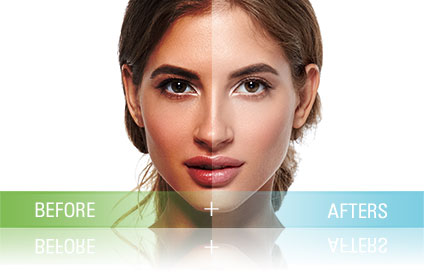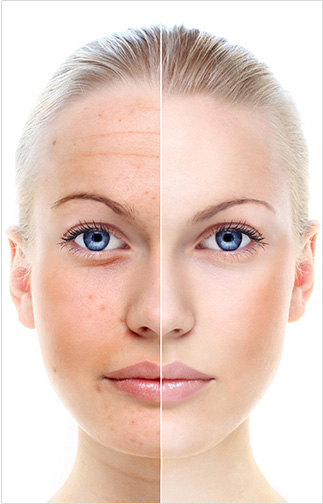 Skin is the largest organ on the human body. It also happens to be the most exposed, and that means it takes a beating day in and day out. Every time we step outside, we expose our skin to harmful ultraviolent rays, changes in climmate, pollutants and other elements that do damage. All of this can result in hyperpigmentation, fine lines and wrinkles, uneven texture and skin impurities that make us look older. Luckily, we have natural repair processes in our skins, and chemical peels give us the ability to use those processes to our advantages.
Skin is the largest organ on the human body. It also happens to be the most exposed, and that means it takes a beating day in and day out. Every time we step outside, we expose our skin to harmful ultraviolent rays, changes in climmate, pollutants and other elements that do damage. All of this can result in hyperpigmentation, fine lines and wrinkles, uneven texture and skin impurities that make us look older. Luckily, we have natural repair processes in our skins, and chemical peels give us the ability to use those processes to our advantages.
Here’s what you need to know. We are constantly shedding our skin. In fact, we shed our entire skin about once a month, and as fast as we shed those cells, our body makes new ones to replace them. Often when we develop imperfections such as sunspots or scars, they only affect the top few layers of skin. So removing those layers of skin would help remove or improve those imperfections. That’s where a chemical peel can help. It literally removes layers of skin so that newer, healthier skin cells can surface. Bottom line: the purpose of a chemical peel is to erase imperfections and improve skin tone and texture by removing outer layers of damaged skin. Read on to learn what’s involved in different types of chemical peels and which might be best for you.
There are three basic types of peels:
- Alpha Hydroxy Acid Peels– alpha hydroxy acid, also known as AHAs, are one of the most popular ingredients in a mild chemical peel. Glycolic acid is the most common AHA used for this purpose. These peel are typically used to reduce the appearance of fine lines, smooth rough skin and produced a more even skin tone. Because this is a mild chemical peel, a series of treatment may be required to achieve desire results and certain formulations, like our SkinLab Weekly Peel Pads can be used as an at home treatment.
- Beta Hydroxy Acid Peels– the most common beta hydroxy acid used in chemical peel is salicylic acid. This substance is also frequently used in acne products, which is why salicylic chemical peels are often used to treat acne-prone skin. Salicylic Acid is more active on reduction of oil, so it is a very common, and effective peel for acne. These peels are typically repeated periodically to maintain softer, smoother skin.
- Jessner’s Peels– A Jessner’s peel is actually a combination of ingredients mixed into a single formula. It is considered a light-medium chemical peel that is slightly stronger than both the alpha and beta hydroxy formulas. Complete recovery from Jessner’s peels about a week, and like other light peels, a series of treatments spaced a month apart is optimal.
More aggressive peels to target severely damaged skin:
- TCA peels- Trichloroacetic acid is the most common ingredients found in medium depth chemical peels layered with other agents. This substance can successfully treat a host of skin imperfections, including sun damage, fine lines and wrinkles, and acne scarring. The procedure offers effective results with minimum risk. TCA chemical peels usually take about a week to recover from, and the results are much more dramatic than lighter peels can offer.
- Phenol Peels-
Phenol is the substance of choice for deep chemical peels that provide the greatest and most dramatic results. In addition to treating skin imperfections, this type of chemical peel may be used to remove precancerous growths or completely diminish deep wrinkles. Phenol peels can take up to a month to recover from completely, but the results are impressively smoother skin that will last much longer than treated with other types of peels.
The right type of chemical peel for you will depend on the skin imperfection you are treating and the results you are hoping for. At the Derm Institute Dr. Annie Chiu expertly customizes these ingredients and layers different peels with retinols, peptides and vitamin c to produce the depth of peel uniquely formulated for you and your skin concerns.
Specialized peels can also be used on the eyelid and around the mouth area. Winter is a great time for a deeper resurfacing peel! Come see us soon and schedule your peel today.
…Shared by TDI Team

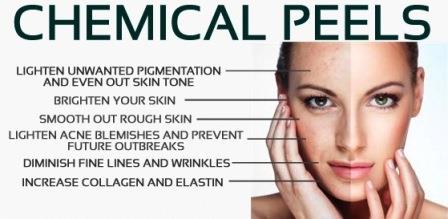 Phenol is the substance of choice for deep chemical peels that provide the greatest and most dramatic results. In addition to treating skin imperfections, this type of chemical peel may be used to remove precancerous growths or completely diminish deep wrinkles. Phenol peels can take up to a month to recover from completely, but the results are impressively smoother skin that will last much longer than treated with other types of peels.
Phenol is the substance of choice for deep chemical peels that provide the greatest and most dramatic results. In addition to treating skin imperfections, this type of chemical peel may be used to remove precancerous growths or completely diminish deep wrinkles. Phenol peels can take up to a month to recover from completely, but the results are impressively smoother skin that will last much longer than treated with other types of peels.


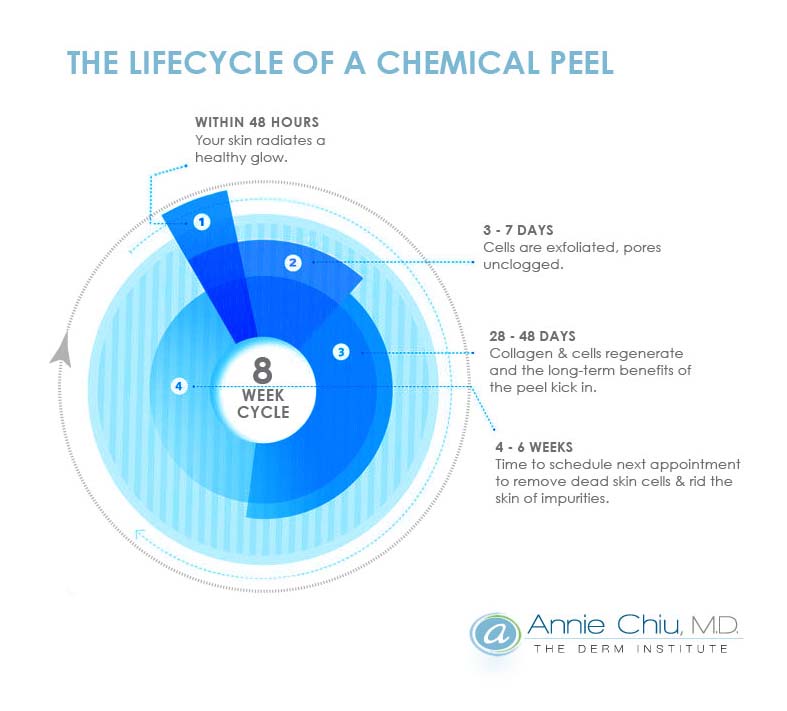
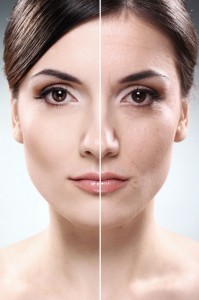 Get ready to slough off the summer photodamage with a
Get ready to slough off the summer photodamage with a 
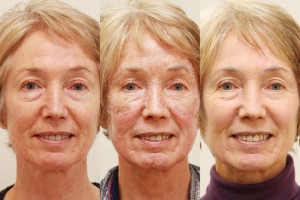
 Most
Most